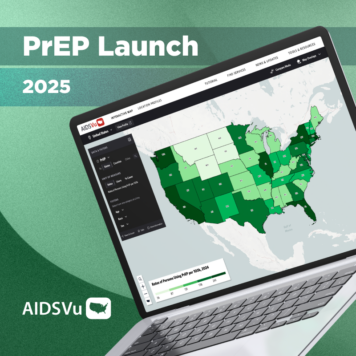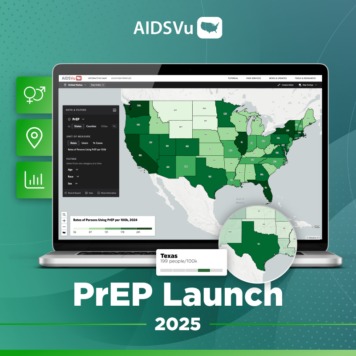Today, AIDSVu is pleased to release its annual June launch of interactive online maps with the latest available data for HIV prevalence and new HIV diagnoses in the U.S. As part of an ongoing effort to provide the most comprehensive resources about the epidemic, we are excited to include a number of enhancements to the site in this release to make AIDSVu even more accessible to all users.
This year’s release features maps showing HIV prevalence data for 34 highly-impacted U.S. cities, including for the first time Birmingham, AL, updated state- and county-level prevalence data, and year-by-year new diagnosis data for 2008 to 2013. Census tract maps will be updated for Chicago, Philadelphia and Washington D.C., neighborhood maps are added for San Francisco, and updated for Chicago and Washington, D.C., and housing opportunities for people with AIDS are now available on the services locator.
Other highlights of the launch include:
- Improved website functionality – a tutorial to help users navigate the site and maps, enhanced local statistics pages with profiles for 29 U.S. cities and all states that offer easy-to-understand and printable snapshots, a geo-located homepage to recognize users’ locations and automatically present local maps and statistics, and a redesigned map legend and key to enhance function and appearance.
- New downloadable and printable resources – updated slide decks for 34 AIDSVu cities, states, and national, updated data-for-download for all cities which authorized availability of data on AIDSVu, and updated data methods. For the first time, AIDSVu is also making available all historical data from 2008 to 2012 and slide decks from 2010 to 2012.
- Resource locator maps –updated HIV testing and treatment locations, and for the first time, housing opportunities for persons with AIDS, alongside NIH-funded HIV prevention, vaccine and treatment trials locations viewable on AIDSVu’s interactive maps.
- HIV prevalence maps alongside social determinants of health – such as poverty, high school education, median household income, income inequality, and people without health insurance.
The data and resources available on AIDSVu can help people working in HIV to better understand where prevention, testing, and treatment services are most needed. Here are a few ways that you can utilize AIDSVu in your community:
- Use AIDSVu’s interactive maps and city profiles as a resource to better understand the U.S. HIV epidemic across geographic levels, and to assist with planning processes, resource allocation, presentations, and grant writing and review.
- Download AIDSVu slide sets and use the wide variety of new map images to develop presentations or handouts that highlight the geography of HIV in the U.S. and the impact of HIV at the local level.
- Access AIDSVu’s HIV Testing Site Locator and HIV Care Services Locator to identify or refer others to testing and treatment services. Testing and services can also be overlaid on AIDSVu’s interactive maps to better understand where resources are located in relationship to where people with HIV are living.
As you integrate AIDSVu into your work and educational efforts, we would love to hear how you are using the maps and resources. Let us know by sending an email or a picture of how you use AIDSVu to info@AIDSVu.org.




